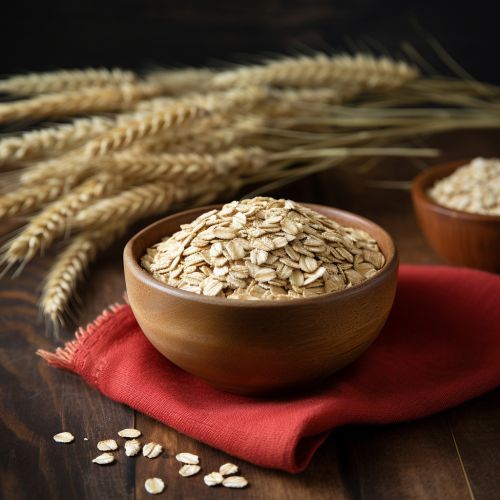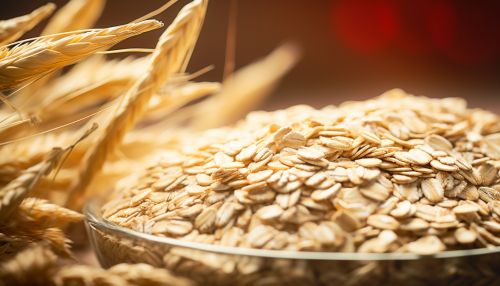Dietary fiber
Overview
Dietary fiber, also known as roughage or bulk, involves all parts of plant foods that the body can't digest or absorb. Unlike other food components such as fats, proteins, or carbohydrates, which the body can break down and absorb, fiber isn't digested by the body. Instead, it passes relatively intact through the stomach, small intestine, colon, and out of the body. Dietary fiber is a crucial component of a healthy diet and has a significant role in human nutrition. It is recognized for its health benefits on digestion, cardiovascular health, and weight management among others.
Types of Dietary Fiber
Dietary fiber is often classified into two categories: soluble fiber, which dissolves in water, and insoluble fiber, which doesn't. Most plant-based foods, such as oatmeal and beans, contain both soluble and insoluble fiber. However, the amount of each type varies in different foods. To receive the greatest health benefit, eat a wide variety of high-fiber foods.
Soluble Fiber
Soluble fiber dissolves in water to form a gel-like material. It can help lower blood cholesterol and glucose levels. Soluble fiber is found in oats, peas, beans, apples, citrus fruits, carrots, barley, and psyllium.


Insoluble Fiber
This type of fiber promotes the movement of material through the digestive system and increases stool bulk, so it can be of benefit to those who struggle with constipation or irregular stools. Whole-wheat flour, wheat bran, nuts, beans, and vegetables, such as cauliflower, green beans, and potatoes, are good sources of insoluble fiber.
Health Benefits of Dietary Fiber
The consumption of dietary fiber can provide numerous health benefits. Here are some of the key benefits:
Digestive Health
Dietary fiber aids in improving digestion by increasing the size and weight of the stool and softening it. A bulky stool is easier to pass, decreasing the chance of constipation. If you have loose, watery stools, fiber may help to solidify the stool because it absorbs water and adds bulk to stool.
Heart Health
High-fiber foods may have heart-health benefits, such as reducing blood pressure and inflammation. Soluble fiber found in beans, oats, flaxseed, and oat bran may help lower total blood cholesterol levels by lowering low-density lipoprotein, or "bad," cholesterol levels.
Weight Management
Foods with high fiber content tend to be more filling, so you're likely to eat less and stay satisfied longer, which can help with weight management. High-fiber foods also tend to take longer to eat and to be less "energy-dense," which means they have fewer calories for the same volume of food.
Blood Sugar Control
Soluble fiber can slow the absorption of sugar and help improve blood sugar levels. A diet that includes insoluble fiber may also reduce the risk of developing type 2 diabetes.
Dietary Fiber Intake Recommendations
The amount of dietary fiber that one should consume varies depending on age and gender. According to the Institute of Medicine, the recommended daily amount for men is 38 grams and for women is 25 grams. For individuals over 50, the recommended daily amount for men is 30 grams and for women is 21 grams.
Increasing Fiber Intake
Here are some tips that can help you increase your fiber intake:
- Start your day with a high-fiber breakfast cereal. - Switch to whole grains. - Eat more beans, peas, and lentils. - Eat more fruits and vegetables. - Make snacks count.
Potential Risks of High Fiber Intake
While a high-fiber diet has numerous health benefits, too much fiber can cause problems. This is especially true when fiber intake is dramatically increased overnight. This can lead to abdominal cramps, bloating, or gas. Gradually increasing the amount of fiber you eat can help prevent these side effects.
See Also
- Whole grains - Digestive health - Heart health - Weight control - Blood sugar control
